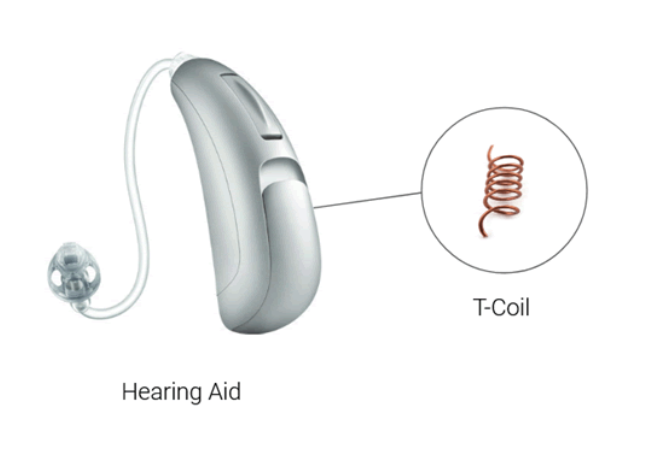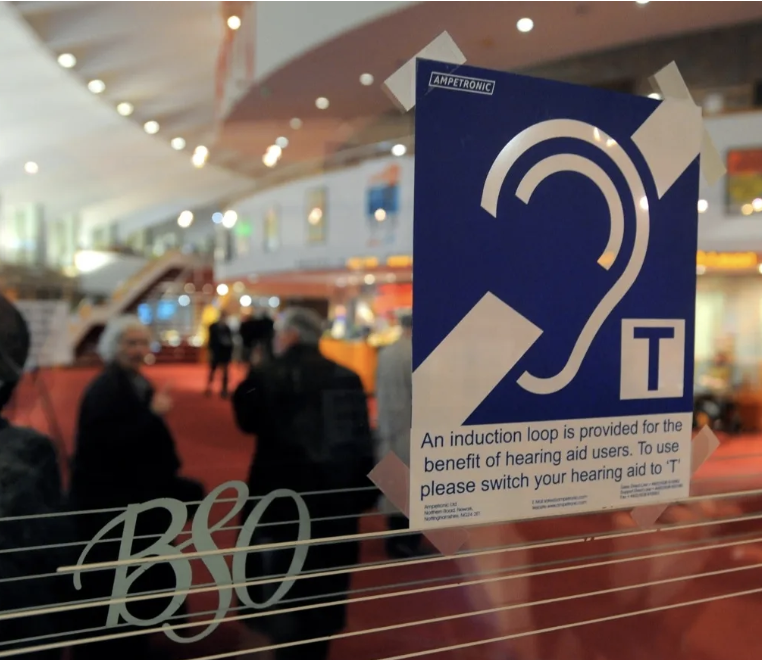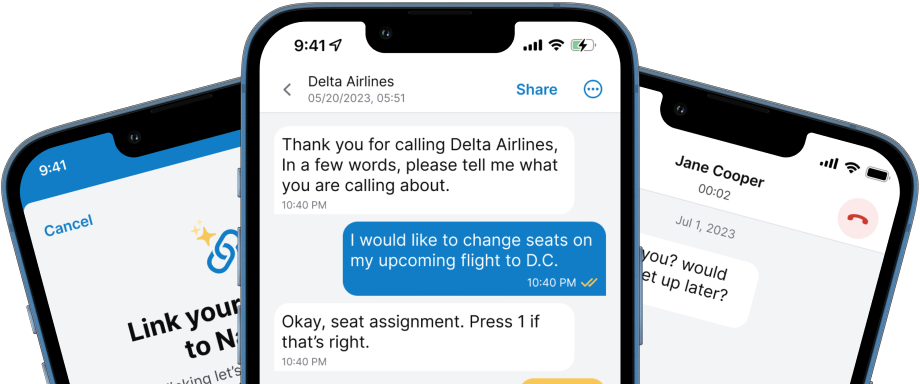Hearing Loop Technology
Hearing Loop Technology is a valuable tool to improve communication and accessibility. Hop in out latest article to read all about it!

Are you familiar with Hearing Loop Technology? Hearing Loop Technology is a valuable tool to improve communication and accessibility that complies with ADA (Americans with Disabilities Act) requirements.
This technology is ideal in situations where clear and direct communication is essential, especially when background noise or distance might make it challenging for individuals who are hard of hearing to grasp audible information.
Hearing Loops are used in many places, including auditoriums, meeting rooms, theaters, and even onboard public transportation systems. They help provide hearing accommodations to people with hearing loss.
Hearing Loop Technology, or an induction loop or audio induction loop, is designed to assist individuals with hearing loss by improving the clarity of audio signals, particularly in public spaces.
Hearing loop devices are made up of three parts:
- A sound source
- An amplifier
- A thin loop of wire that surrounds the room
Who Benefits from Hearing Loop Technology?
The technology provides the greatest benefit to those who rely on assistive hearing devices since it utilizes electromagnetic fields to transmit audio signals directly to hearing aids equipped with telecoils (also known as T-coils) or other compatible receivers.
People with telecoil-enabled devices such as hearing aids, cochlear implant processors, bone conduction hearing devices and streamers with telecoil can use Hearing Loop Systems.
If a person’s hearing aid is not equipped to access hearing loop systems, hearing loop receivers with headphones or earbuds are available to borrow.

Telecoils are essential for assistive listening devices for people with hearing aids and cochlear implants. According to the Hearing Health Foundation, 70% of hearing aid models currently on the market have (or can be fitted with) T-coils. All cochlear implant processors made today have a telecoil.

Background on Hearing Loop Systems
Hearing Loop Technology has been around for several decades, and its introduction dates back to the mid-20th century.
The first commercial induction loop system was developed in the 1940s in the United Kingdom by Dr. Joseph Poliakoff, an engineer. However, the technology gained more widespread use and attention in the following decades.
In 1990, the Americans with Disabilities Act (ADA) mandated hearing accessibility in the United States without distinguishing between loop systems and more affordable FM or IR systems. However, a significant shift occurred in 2010 when it became a requirement for at least 25% of receivers in renovated or newly constructed facilities to be compatible with hearing aids.
This compatibility ensures users can seamlessly utilize the system without removing their hearing aids, consequently sparking increased interest and availability in hearing loops. Hearing loops stand out as the only assistive listening systems directly connecting to telecoil-enabled hearing devices.
Types of Hearing Loop Devices
Other types of Hearing Loop devices include:
Bluetooth Hearing Loop
Bluetooth Hearing Loops allow deaf or hard of hearing individuals to wirelessly transmit calls and music to a hearing aid with a built-in telecoil. The major difference between Bluetooth and Hearing Loop technology is that Bluetooth is a wireless technology that works one-to-one independently of a loop. On the other hand, Hearing Loop technology is one-to-many.
Counter Loop
This type of Hearing Loop System is designed with portability in mind. The loop will have a microphone and can be installed on a counter, which transmits the voice signal to the telecoil of the customer’s hearing aid. A pad is installed under the counter, which contains the copper wire that sends the signal to the amplifier. This works well in counters such as pharmacies, information desks, DMV’s, and other service spaces.
Amplified Telephones
Amplified Telephones are designed for people with hearing loss to increase the volume to meet specific hearing needs. They are built with extra-loud ringtones and easy-to-hear receivers to make them as accessible and simple to use for just about anyone. As with Bluetooth Hearing Loop devices, this technology is not meant to serve groups of people simultaneously.
How Do Hearing Loop Systems Work?
Hearing Loop Systems require installation and regular maintenance to ensure the equipment is operating correctly and providing value to end users. Let’s briefly go over how the process of adopting this technology works.

How it works:
Step 1
Installation of Loop System:
- A loop of wire is installed around a specific area, such as a room or auditorium. Hearing loops that meet the IEC 60118-4 standard provide the cleanest sound to people with hearing loss, even some of those with severe or profound hearing loss.
- The loop wire can be installed under the carpet, overhead, around a baseboard, or in the ceiling of the floor below. To keep a uniform signal strength, the wire should be placed at the same height around the room, and it’s recommended to avoid installing the wire at ear height.
- The loop is connected to an amplifier or audio source.
- The Hearing Loop System international symbol should be clearly visible and displayed in the room for all users. For example, at the entrance to the looped room or a counter.
Step 2
Set Up Signal Transmission:
- A sound source such as a microphone feeds sounds into an amplifier.
- The audio signal is converted into an electromagnetic field within the loop.
Step 3
Activate Receiver in Hearing Aids:
- People wearing compatible hearing aids with built-in telecoils, or T-coils can pick up and amplify the electromagnetic signal directly into their hearing aids.
- In this way, the hearing device converts the signal into customized sound for specific patterns of hearing loss.
Step 4
Hearing Loop System Maintenance:
- Visual inspections of the amplifier allow for checking for error lights
- Visual inspection of the flooring/carpet allows for detecting secure installation when loops are installed under carpet or floor tile.
- Audio inspections of the system confirm the signal functions at the appropriate levels.
- Assessing background noises, field strength, and frequency response using a Field Strength Meter (FSM) guarantees the background noise is not disrupting the signal.
The Hearing Loop System international symbol lets people know a room is looped, so they can switch their hearing devices to telecoil or “T” mode.

Hearing Loop Technology for Home Use
Hearing Loop systems may also be beneficial for home use. Microphones can be attached to your hearing loop amplifier and be wired or wireless. If you have guests over, you can have them speak into the microphone, and you’ll be able to hear them through the loop.
Pros and Cons of Hearing Loop Technology
Pros:
ADA Compliance
Complies with Americans with Disabilities Act requirements.
Universal Access and Compatibility
Internationally accepted standard for hearing accommodation and works with any hearing aid and in various environments, ensuring widespread accessibility.
Discreet System
Aesthetically unobtrusive as the loop is typically hidden, and users blend in, encouraging participation and inclusion.
Easy to Use
With a simple switch in hearing devices to the telecoil program, individuals automatically receive clear, customized sounds. Plus, There is no need to arrive early, stand in line, or wait to return equipment after an event or meeting.
Quality Sound
Direct transmission enhances speech and music understanding, delivering clearer audio signals.
Better Hygiene
Eliminates sanitation concerns associated with shared devices.
Cons:
Limited Accessibility for Non-Compatible Devices
Excludes individuals without telecoil-equipped devices.
Installation Costs
Initial setup expenses for the loop system can be high depending on the venue's location, size, and construction. Once installed, maintenance is highly accessible.
Maintenance
Regular upkeep is necessary for consistent system performance.
Interference Issues
Electromagnetic interference or metal structures may affect system functionality.
Awareness and Education
Some users may be unfamiliar with it, requiring educational efforts.
The Future of Hearing Loop Systems
The Hearing Loop market is on track to reach $15.6 billion by 2032 from $9.4 billion in 2022, according to Market Research Biz.
This steady 5.4% annual growth will bring clearer sound to more people with hearing loss.
What is driving this growth?
With an aging population and increasing awareness of hearing loss, there's a growing demand for technologies that enhance accessibility. At the same time, government and regulatory support, public awareness, and technological advancements continue to propel the adoption of inclusive services.
Despite some challenges, such as installation costs, compatibility issues, and areas with limited awareness about the benefits of hearing loops, the future of Hearing Loops looks promising. These are some of the trends shaping the growth and adoption of hearing loop systems:
- Connectivity and Integration with Smart Devices
- Architects and Designers Promoting Inclusive Design
- Customization Features
- Discreet and Concealed Installation Options
Conclusion
Hearing Loop Systems is the only type of assistive listening device that is universal and compatible with all hearing aids with a T-coil.
Including telecoils in all hearing aids and the looping of public spaces would improve hearing aid benefits and user satisfaction and, most importantly, enable people with hearing loss to access the information being shared in public spaces while experiencing less uncertainty and stress.
ADA-compliant Hearing Loop Systems provide greater user satisfaction because they are safe, effective, easy to use, and discrete. Providing this accessibility feature ensures everyone, regardless of hearing ability, has access to the information being shared in public spaces.





